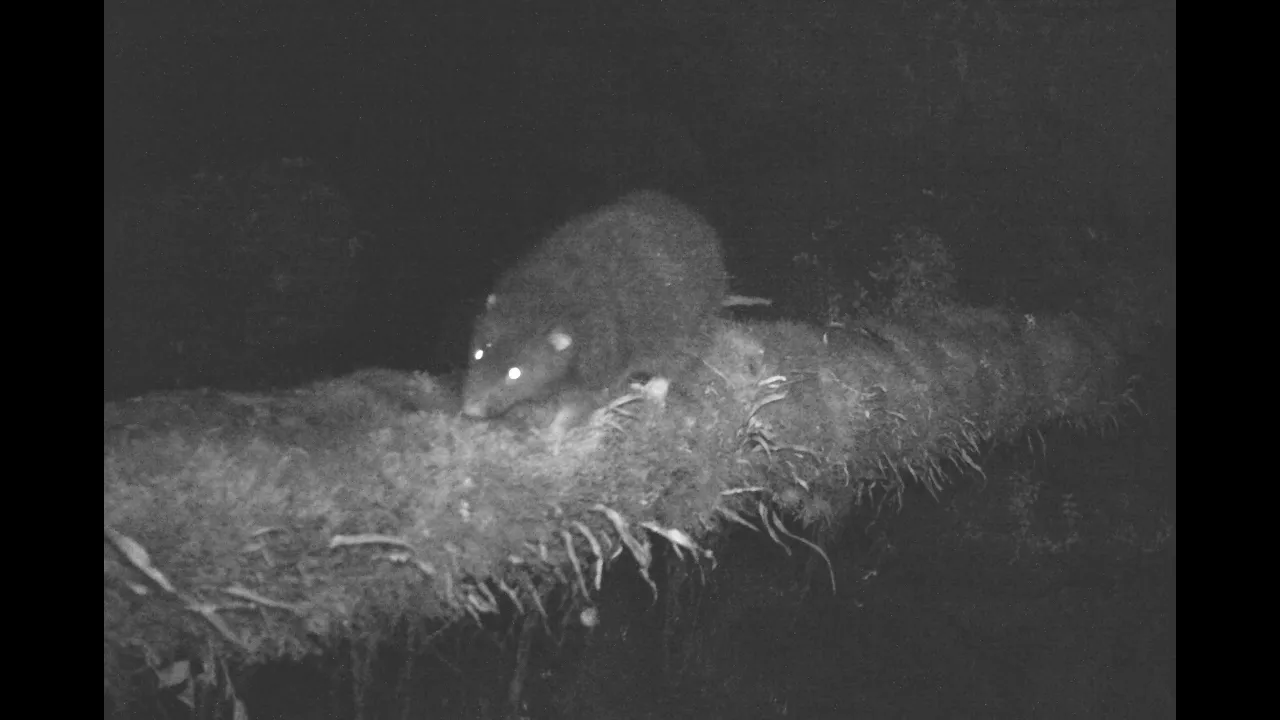Giant Woolly Rat Caught on Camera for First Time Ever

The subalpine woolly rat, a giant rodent long known only from rumor, has been photographed and filmed in the wild for the first time.
Biologist František Vejmělka, a doctoral candidate at the Biology Centre of the Czech Academy of Sciences and the University of South Bohemia, led a six-month expedition to the remote highlands of Mount Wilhelm, Papua New Guinea’s tallest mountain. There, with the support of local Indigenous communities, he successfully documented the rat’s behavior, appearance, and habitat.
“It’s astonishing that such a large and striking animal has remained so poorly studied,” Vejmělka says in a statement. “How much more is there to discover about the biodiversity of tropical mountains?”
First described in 1989, the subalpine rat [Mallomys istapantap] had not been seen alive by scientists until this expedition. Local stories of a shaggy rat as big as a cat persisted for decades, but evidence of its continued existence was lacking. The rat is nocturnal, solitary, and lives at altitudes between 10,500 and 12,140 feet, which has made it difficult to study.

The images, captured using motion-activated camera traps positioned along game trails, show the rat foraging at night, clambering across moss-covered logs, and moving through tree canopies. These visual records confirm it lives in trees and reveal that the species often hides in underground burrows or high among the branches during daylight hours.
The subalpine woolly rat is one of the largest rodents in the world. Males can reach up to 85 cm (about 33 inches) in length and weigh over 2 kg (4.4 pounds), with three-inch-long paws and a thick, shaggy coat adapted to cold alpine conditions.
“Their ancestors arrived from Asia to the island completely absent of any other terrestrial placental mammals (only marsupials and monotremes),” Vejmělka tells Live Science. “Without much competition to worry about, they’ve been able to adapt to the rainforest landscape and thrive.”

The species’ large size is believed to be a result of insular gigantism, a phenomenon in which animals on islands evolve to become larger than their mainland relatives. Genetic analysis suggests it diverged from other murid rodents approximately five million years ago, adapting to alpine niches with limited competition and isolated habitats.
The expedition also recovered a deceased specimen, killed by a local hunter’s dog, which allowed for comprehensive morphological assessments, including parasite analysis and tissue sampling. These findings provided the first biometric measurements of male individuals and revealed previously unknown traits, such as a tufted tail tip that may aid in balance.
“If it weren’t for the Indigenous hunters who accompanied me in the mountains and helped me locate the animals, I would never have been able to collect this data,” Vejmělka stresses.
Image credits: Czech Academy of Sciences
Source link



